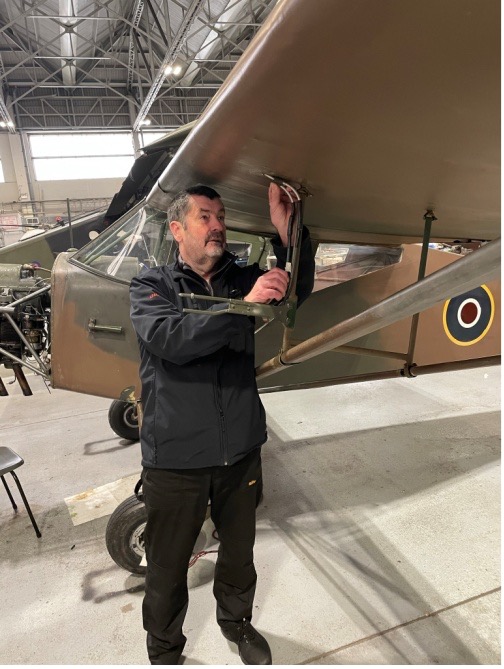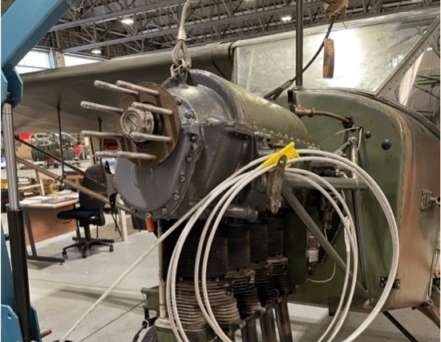There’s no doubt that a Pitot-Static system will work a whole lot better if the pipes aren’t leaking – which is why as a part of our checks to return this venerable old Lady back to the sky, the system was pressure tested.
Cheery as ever (?) and following the test, one of our volunteer avionic engineers (we still call them Greenies) pronounced it “leakier than a sieve”! The usual banter quickly followed as we agreed which trade group would pick up the repair.
Having lost the toss to the Greenies, our first task was to find the leak with initial investigations showing it was within the wing leading edge “somewhere between the wing root and the pitot-static sensor under the wing” – helpful! A little judicious cutting of the wing upper fabric covering revealed a (very) old break and associated rubber pipe insert repair – proving that given enough time, rubber will degrade and fail.
We decided to repair the system by replacing both complete pitot and static pipe runs. More holes were needed in the upper wing surface to enable an Auster Mk1 version of threading a string through the eye of a needle. The first task was to straighten the roll of malleable aluminium tubing, (using the old trick of sliding a wooden block with a hole drilled through it down the tube – still works perfectly).
The tubing was inserted from the Starboard (right-hand) side of the aircraft, through the cabin, along the rear of the leading edge spar (next to the old pipes) and then back into the wing cavity and down through the lower skin. The last two chicanes in the pipes were tricky to execute in situ and I found myself super thankful that I was blessed with very small hands, essential for such a task.
The Greenies completed the pipework (after the fiddly bits were done) with a really lovely finish at the sensor under the wing and some deft pipe routing from the wing root down the cabin pillar and into the instrument. This just left us making our very own patchwork quilt on the upper surface of the port (Left-side) wing surface. With curved needles at the ready, all the access panels were soon stitched up and re-finished.
……….and to explain the blog title; Monsieur Henri Pitot invented the Pitot tube in the early 1700’s, barely a year or two before our Auster first took to the skies. Nice one Monsieur Pitot!

Converting 10 metres of coiled aluminium pipe into something (straighter) we can work with.

Persuading the new pipes through the wing took time before hooking up to the sensor tube.

The wing access holes stitched up and patch repaired.

The pitot-static pipe end’s destination. Not a crowded cockpit but access is tight.

